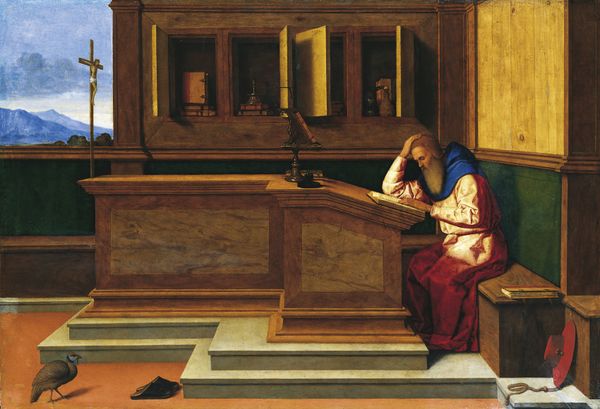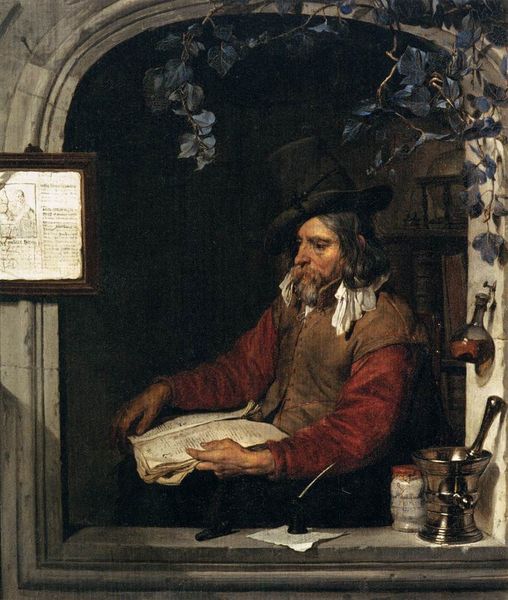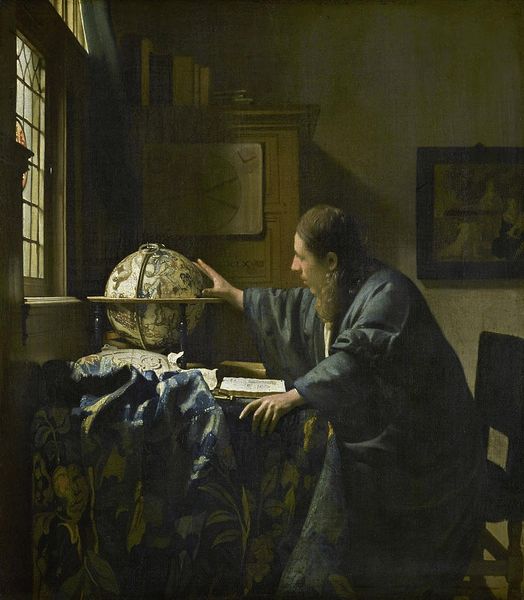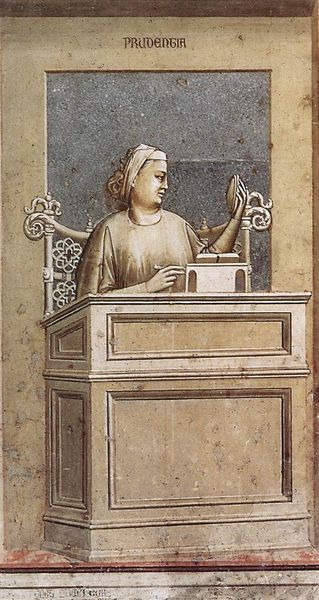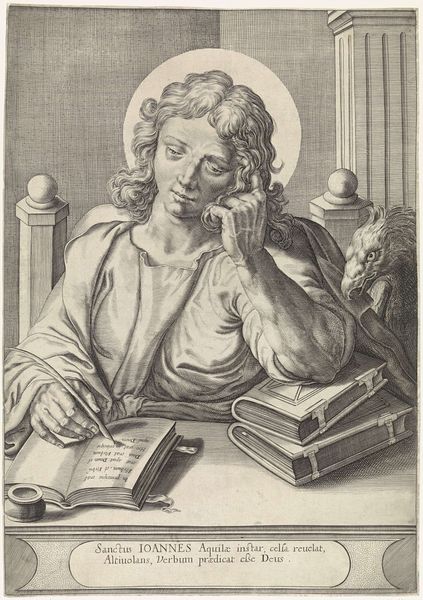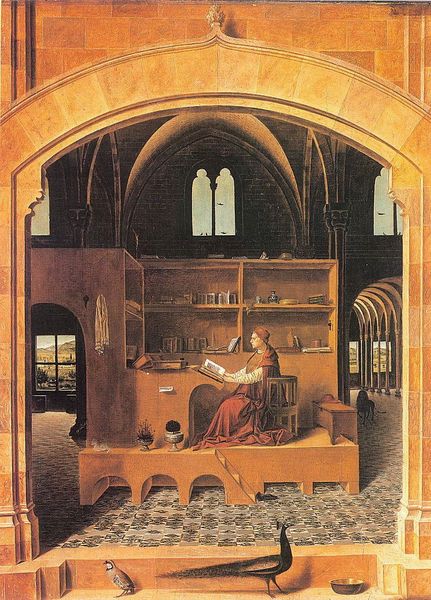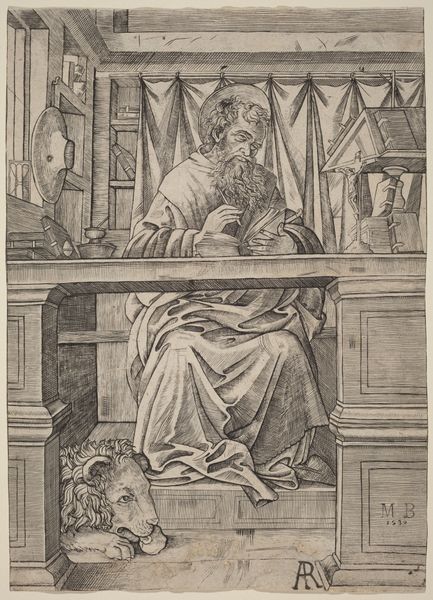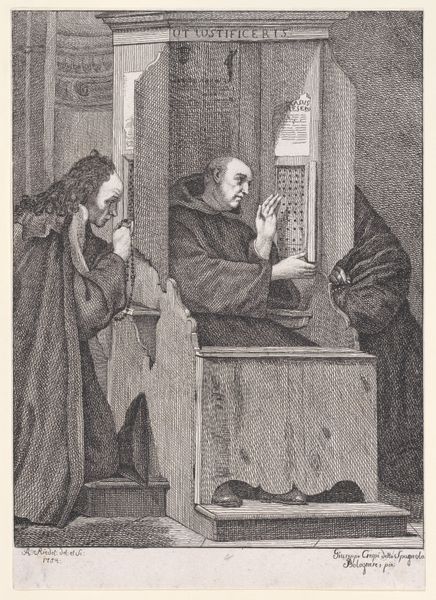
tempera, painting, oil-paint
#
portrait
#
tempera
#
painting
#
oil-paint
#
sculpture
#
oil painting
#
underpainting
#
christianity
#
painting painterly
#
history-painting
#
italian-renaissance
#
early-renaissance
#
portrait art
Copyright: Public domain
Filippo Lippi’s "Vision of St. Augustine" presents a structured scene in earth tones. The composition is anchored by architectural forms and figures in monastic dress. Note how the linear perspective draws the eye into the space, yet the figures feel somewhat flattened against the background, challenging a full illusion of depth. The room, divided into defined compartments, suggests a space of both intellectual and spiritual activity. Augustine is shown in the act of writing, head raised as if divinely inspired. The architectural setting, with its niches and shelves, implies order and containment. The books and objects are carefully arranged, imbuing them with symbolic weight. Yet this controlled environment is disrupted by the second monk who appears surprised. This ordered space is both a reflection and a construction of meaning. Lippi’s use of perspective isn’t just a technique for creating depth, it’s a way of structuring knowledge and experience. The painting operates as a semiotic system, where objects and figures stand in for abstract ideas. The arrangement destabilizes our understanding of space, emphasizing the symbolic over the purely representational.
Comments
No comments
Be the first to comment and join the conversation on the ultimate creative platform.
